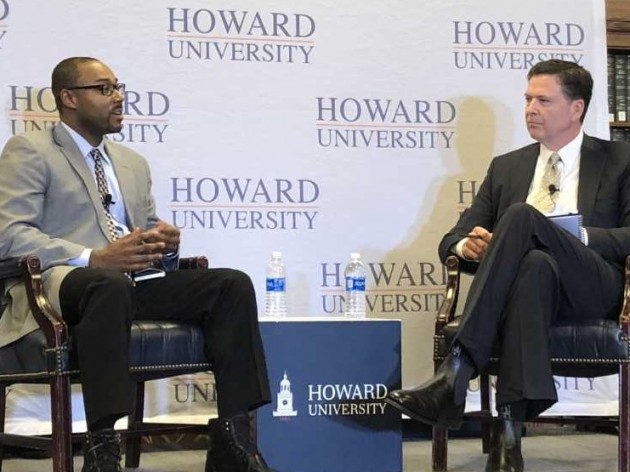Male-dominated associations dividing along racial and ethniclines who stake out a specific territory while displaying symbolsthrough their dress, body art, hand signals and language; fordecades, this has been the common description of a “criminal streetgang.”
According to the Institute forIntergovernmental Research, over 70 percent of all states haveenacted legislation to fight the proliferation of gangs inAmerica. But the most recent move to curb gang violence,the Criminal Street Gang Abatement Act of 2004, sponsored by Sen.Charles Schumer (D-NY), sets new standards for the prosecution ofthose accused of gang affiliation.
Not only will this act make it afederal crime to participate in a “criminalstreet gang,” which is defined as three or more people cooperatingto commit two or more gang crimes, but it also makes it easier forprosecutors to pursue the death penalty.
Under S-1735, prosecutors are able to treat16-year-olds as adults if they commit murder, manslaughter,carjacking or armed robbery. Right now, only a judge can determinewhether a juvenile defendant should be tried as anadult.
If this proposed bill becomes law, the penaltiesone will have to face if they are accused of participating in gangactivity will increase. Those involved in the recruitment of gangmembers will face up to 10 years in jail while those who commit twoor more gang street crimes can receive up to a 30-year sentence.The death penalty or life in prison will be given to those whocommit murder.
The bill’s sponsors are calling for $663 millionin federal funding for the 2005-2009 period and $250 million instate and local grants for the purpose of forming community-basedprograms.
Schumer argues that the bill will provide localand state officials the help they need in fighting gangs on thefederal level but critics of the bill claim it ignores the factthat gang-related deaths have decreased by more than half since theBloods and Crips in Los Angeles signed a truce in 1992. Thestipulations of the truce were modeled after the peace treatydesigned by Ralph Bunche in 1949 for Egypt andIsrael.
Stanley “Tookie” Williams, co-founder of the Crips, whichoriginated in the 1970s in California,recently announced the release of two powerful anti-gang violencepublic service announcements. Since his incarceration in SanQuentin’s Death Row, for crimes he claims he did not commit,Williams has written a series of nine children’s books about hislife, which are being used as a prevention tactic in schools andjuvenile detention facilities across America.
His work as a non-violence advocate through hisbooks and international Internet Project for Street Peace, earnedhim a nomination for four Noble Prizes for Peace and three forLiterature. On his Website, wwww.tookie.com, Williams apologized tothe American community for his contribution to gang culture. Hestates in his formal apology:
“So today I apologize to you all — the childrenof America and SouthAfrica— who must cope everyday with dangerous street gangs. I no longer participate in theso-called gangster lifestyle, and I deeply regret that I ever did,”wrote the cofounder of a gang that reaches youth as far asSouth Africa. “My goal is to reach as many young mindsas possible to warn you about the perils of a gang lifestyle,” headded; and that is exactly what he is doing.
Redemption, an FX original telepicture starring Jamie Foxpersonifying Williams’s transformation from Crips co-founder to amodel of international peace, was the highest rated andmost-watched basic cable original movie in the 2003-04 season amongviewers ages 18 to 49.
According to Park Hill Entertainment, a productionfirm specializing in non-fiction, syndicated, cable, network andshort-film programming, the movie along with Williams’s peaceprotocol was the driving force behind the Street Peace/Cease FireInitiative developed in NewJersey, where a truce wassigned between the Bloods and Crips in May.
It also moved 14,000 youth, parents, teachers andcommunity leaders to send email testimonials explaining howRedemption, Williams’s books, and the protocol for peaceinspired them to stop “gangbangin’.”
The U.S. Justice Department recently awarded theBoys and Girls Club of Omaha a $98,948 grant to improve their gangprevention program, which teaches kids ages 8 to 15 gang resistancetechniques, and alternative ways to find friends andprotection.
SafeYouth.org maintains that schools are used asrecruitment centers in cities where gangs propagate and thepercentage of students reporting gang activities at their schoolsnearly doubled between 1989 and 1995. Often, youth join gangs as aform of self-protection in response to the gang environment thatexists within the school.
Contrary to popular belief, the inner cities ofAmerican are not “the hub” of gang activity. Gang membershipincreased by 27 percent in the suburbs and 29 percent in ruralareas in 1998. Furthermore, in 1999 Caucasians constituted 30percent of gang membership in small cities and rural counties.
Female and youth gang membership is also on therise. A study published in 2001 titled “Female Gangs: A Focus onResearch,” found that eight percent of all gang members were femalein 1998. Another survey, conducted by the FBI’s Uniform CrimeReporting Program, found that killings performed by juvenile gangmembers increased 500 percent between 1980 and 1994, which made itone of the fastest-growing crimes in the United States.
Many critics of the bill argue that it will have asignificant affect on the number of Black males incarcerated. Dr.Rodney Green, an economics professor at Howard University,agrees that this bill is likely to increase the profits of thefastest growing industry in the United States,the prison system.
“Any legislationwhich increases the already-harsh sentence guidelines for youth islikely to further swell the prison population,” says Green,”creating even more incentives for the prison-industrial complex toincrease the level of exploitation of prisoners, both to bolsterprofits on the side of the business firms and to offset increasingprison costs on the side of the prisonauthorities.”
He agrees that community-based programs already inexistence should be expanded rather than harshlegislation.
“Abating gangviolence requires a holistic approach to expanding the opportunityset available to youth. Further repressive legislation onlyheightens the oppression in the community, making things worse onthe ground and making grassroots community-based support moredifficult.”






